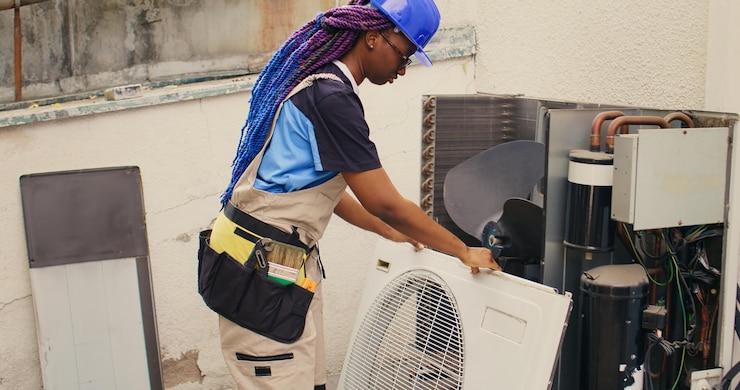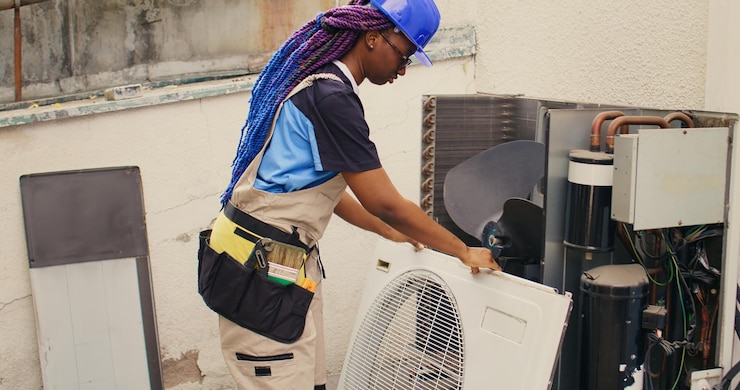The world of residential HVAC systems is evolving rapidly, thanks to the introduction of AI diagnostics tools. These advanced tools are transforming how homeowners and industry professionals manage heating, ventilation, and air conditioning systems. In this article, we will explore the benefits and applications of AI diagnostics tools for residential HVAC systems.

Understanding AI Diagnostics Tools
AI diagnostics tools are sophisticated technologies that use artificial intelligence to monitor, analyze, and optimize HVAC systems. These tools are designed to provide real-time insights into system performance, identify potential issues, and recommend solutions. By leveraging machine learning algorithms, AI diagnostics tools can predict equipment failures and suggest preventive measures.
How AI Enhances HVAC Efficiency
One of the primary advantages of using AI diagnostics tools in residential HVAC systems is enhanced efficiency. By continuously monitoring system performance, these tools can identify inefficiencies and recommend adjustments to improve energy consumption. As a result, homeowners can enjoy lower energy bills and a reduced carbon footprint.
Predictive Maintenance
Predictive maintenance is another significant benefit of AI diagnostics tools. By analyzing historical data and current performance, AI can forecast when components are likely to fail. This allows homeowners and technicians to address issues proactively, reducing the risk of system breakdowns and costly repairs. For more insights, explore our article on predicting HVAC breakdowns.
Applications of AI Diagnostics Tools in Residential HVAC
Real-Time Monitoring
AI diagnostics tools provide real-time monitoring of HVAC systems, allowing homeowners to stay informed about their system’s health. This continuous oversight enables quick detection and resolution of issues, ensuring optimal performance and comfort.
Energy Optimization
Energy optimization is a critical application of AI diagnostics tools. By analyzing data from various sensors, these tools can adjust system settings to minimize energy usage while maintaining comfort levels. This not only reduces energy costs but also supports sustainability efforts.
Improved Air Quality
AI diagnostics tools can also enhance indoor air quality by monitoring and controlling ventilation rates. By ensuring proper airflow and filtration, these tools help maintain a healthy indoor environment. Learn more about how AI contributes to indoor air quality monitoring.
The Future of AI in Residential HVAC
The integration of AI in residential HVAC systems is just beginning. As technology advances, we can expect even more innovative solutions to emerge. Future developments may include more sophisticated predictive algorithms, improved integration with smart home devices, and enhanced user interfaces. For an in-depth look at AI’s role in HVAC diagnostics, visit how AI is used in HVAC diagnostics.
Challenges and Considerations
While AI diagnostics tools offer numerous benefits, there are challenges to consider. Privacy concerns, data security, and system compatibility are important factors that homeowners and industry professionals must address. Additionally, the cost of implementing AI technologies can be a barrier for some households.
Conclusion
In conclusion, AI diagnostics tools for residential HVAC systems offer numerous advantages, including enhanced efficiency, predictive maintenance, and improved air quality. As technology continues to evolve, these tools will play an increasingly important role in the HVAC industry. By staying informed and embracing these advancements, homeowners can enjoy a more comfortable, efficient, and sustainable living environment. For more information on AI-enabled system optimization, check out AI-enabled HVAC system optimization.

FAQ
What are the benefits of AI diagnostics tools for HVAC systems?
AI diagnostics tools offer several benefits, including increased energy efficiency, predictive maintenance, and enhanced air quality. They enable real-time monitoring and adjustments, leading to cost savings and improved system performance.
How do AI diagnostics tools improve energy efficiency?
These tools analyze data from sensors to optimize system settings, reducing energy consumption while maintaining comfort levels. This leads to lower energy costs and supports sustainability efforts.
Are there any challenges associated with implementing AI in HVAC systems?
Yes, challenges include privacy concerns, data security, system compatibility, and the cost of implementation. It’s important to address these issues to fully benefit from AI diagnostics tools.
This article contains affiliate links. We may earn a commission at no extra cost to you.
